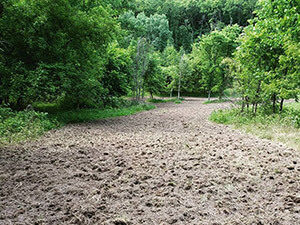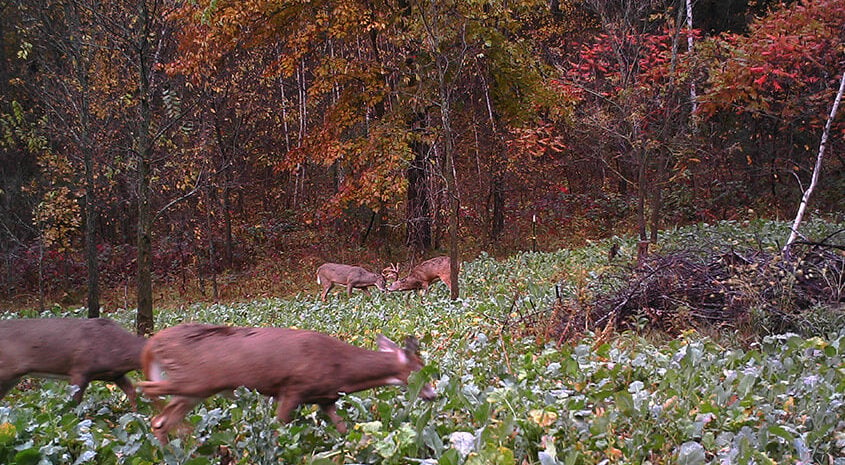Author: Coltyn Bettis – Land Specialist
Food plots can dramatically boost your hunting land’s ability to attract and hold deer within its boundaries. But there are a lot of considerations to make when choosing where and how to install these effective tools: Haphazard, willy-nilly approaches don’t tend to work out very well. Successful food-plot architecture requires hunters to put on two additional hats besides their camo ones: that of farmer and that of a wildlife biologist.
Choosing a Spot
 The #1 thing I do when planning a food plot is picking out the tree or stand location and also try to position your food plot(s) so that they’re upwind of major human travel lanes and activity hubs on the property, including approaches to your deer stands. You don’t want your scent to regularly flush deer from the food plots; they may abandon them altogether if they don’t feel safe using them.
The #1 thing I do when planning a food plot is picking out the tree or stand location and also try to position your food plot(s) so that they’re upwind of major human travel lanes and activity hubs on the property, including approaches to your deer stands. You don’t want your scent to regularly flush deer from the food plots; they may abandon them altogether if they don’t feel safe using them.
Your property may already include cropland, or perhaps log landings or abandoned pastures. These have great potential as food-plot sites because they will require less initial preparation work.
Whether you’re adopting existing cropland or meadow or you’re clearing a new area in a forest, maintaining thick vegetation beside your plot increases its appeal among deer & other wildlife, as they’ll feel more secure approaching the plots and have a convenient sheltered place to lay up nearby during the day. Vegetation buffers between food plots and streamways are also a good idea: They provide a riparian corridor for wildlife, and they cut down on erosion.
Also knowing the intended use of a food plot can determine size, location, what to plant in the particular food plot. Researching the different blends of food plot seed mixes available will give you the best understanding of how, what, and where to plant.
“Feeding” Plots VS. “Hunting” Plots
Speaking of a sense of safety, you might consider mixing up your food plots on the property so that some are hunted and some aren’t, or rarely hunted. Feeding plots (which you don’t hunt or only sporadically hunt) will give deer a foraging site on your property where they feel quite secure and provide the local wildlife ample nutrition. These plots are normally 1-5 acres in size and are placed in a more destination type area closer to other food sources.
“Hunting plots” also referred to as “kill plots,” are usually ¼ – ½ acre in size and are strategically placed close to bedding areas or between bedding and main feeding areas and gives the wildlife a place to stage and lightly feed while passing through making them Ideal for archery and rifle hunters alike.
Shape

Irregularly shaped food plots edged with tall grass or thick brush surrounding them are more likely to draw deer, as they’ll feel closer to shelter and escape routes. You can break up large open fields with plantings of trees or other screening crops to make easy travel corridors that wildlife will use that may also draw them closer to your stand location. Making your own pinch points, inside corners, and other areas deer like to frequent is all at your fingertips! I have found an Hourglass shaped plot works very well no matter the size or use! Strategic planning plays a great role in bringing your quarry within shooting range.
Put some careful thought into where you place your food plots and how you structure them, and you’ll likely see a lot more success attracting your quarry!


